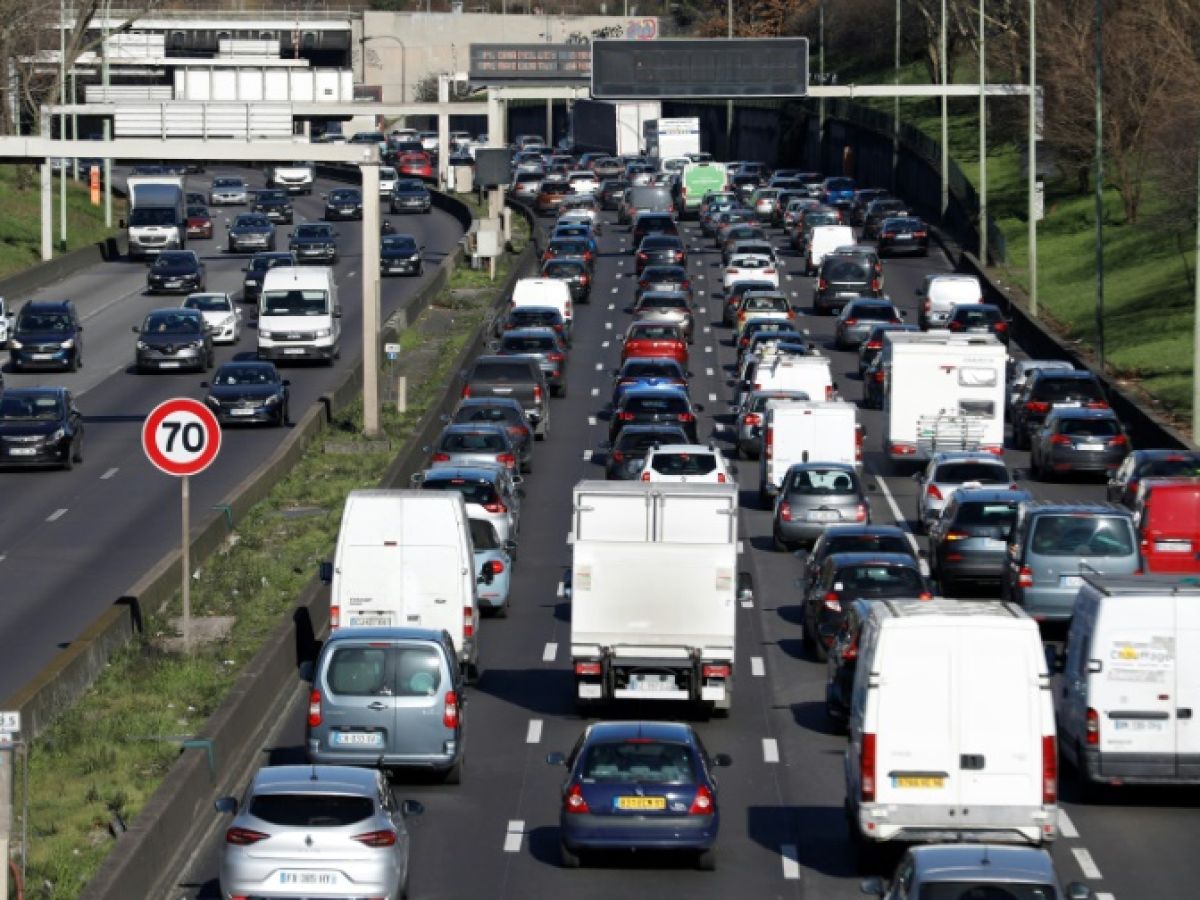Some days, she "feels like she's chewing thick air." Sometimes, the "continuous hubbub" makes her dizzy. Living 150 meters from the Paris ring road, one of the most polluted roads in France, this resident of Bagnolet (Seine-Saint-Denis) knows that she is exposing herself to pathologies that shorten life expectancy.
The green square that Daniele Hivernaud crosses has a bird's eye view of the "peripheral".
"Noise pollution, air pollution: it's very, very loud!" says this 73-year-old woman from Bagnolet, clad in a chic raincoat, who, since she retired, has been asking herself: "But how do we put up with it?"
"Allergic to pollution", with a "constant runny nose", she nevertheless mentions her "luck to have an apartment that does not directly overlook" the ring road.
Daniele is one of the local residents who approve of the reduction in speed from 70 to 50 km/h, wanted by the Paris city hall and supported in particular by that of Bagnolet.
The pollution there is primarily noise.

On Rue Pierre Soulie, lined with houses, the Bruitparif association has a sensor. "We have very high levels there, between 6 and 8 decibels above the regulatory thresholds," notes engineer Fanny Mietlicki, director of Bruitparif, who, since 2009, has been calling for the speed limit to be lowered to 50 km/h.
"People downplay the effects of noise because it's quite insidious," she says. "There is a phenomenon of subjective habituation. But if we put electrodes on their heads, we see that their sleep is disturbed, with conscious or unconscious awakenings, and repercussions on metabolism."
"Someone who sleeps badly is at risk of diabetes and being overweight. Every time we are exposed to noise, our heart rate increases and our blood pressure increases: over time, this increases the risk of heart attack, for example."
– Asthmatic children –
Then air pollution.
Its effects are known: increased risk of developing lung cancer, chronic obstructive pulmonary disease, asthma, etc. But many are still unaware of its impact on all organs, with the finest particles being able to enter the bloodstream, underlines the Airparif association, based on a synthesis of scientific studies.
"We think a lot about the impacts on the lungs, but the majority of mortality comes from cardiovascular impacts," reports Antoine Trouche, on behalf of AirParif.

"Air pollution still contributes to nearly one in ten deaths in the Ile-de-France region," according to a diagnosis published in 2023 by the Regional Health Observatory. Mortality attributable to exposure to ultrafine particles remains estimated at "6,220 annual deaths"...
However, it is not episodes of intense pollution that are most to be feared but "chronic exposure, typically that suffered by local residents", underlines Mr Trouche.
Passing by the Mercuriales – Twin Towers overlooking the ring road and the A3 interchange – Erica, a local resident, lists: “I have headaches, allergy attacks, my two children have asthma attacks, my partner is starting to have breathing problems”. “The doctor says: ‘it’s the pollution’. But it may not just be the ring road,” qualifies this 63-year-old seamstress, 43 of which she has spent in Bagnolet.
"We have a huge number of asthmatic children," notes the director of health in Bagnolet, Nathalie Victor. The national association Respire confirms: "the risk of asthma is increased by 30% for children less than 500 m from a major road."
– Giant exchanger –
Porte de Bagnolet, other roads obsess local residents.

"The real problem for us is not the ring road, it's the motorway interchange" of 1969, says Thierry Jacquet, 70, returning home in a bucolic alleyway in Val Fleuri, close to a network of hideous motorway slip roads.
The first deputy mayor in charge of urban planning, Cedric Pape, himself a local resident and "asthmatic", acknowledges: "The people of Bagnolet have been sacrificed on the altar of 'all cars' for 50 years."
"The various communities agree to possibly bury the interchange," assures Mr. Pape. "A feasibility study will be launched, in particular to find out if we would have the money: several hundred million euros..." And he insists: "It would be the largest ecological project in the Paris region in the next 20 years."
Local residents have doubts and find the time long.
"We wouldn't be in a poor suburb, the motorway and ring road would have been covered a long time ago," says Dr Victor.

